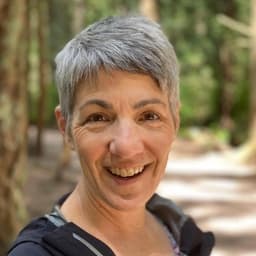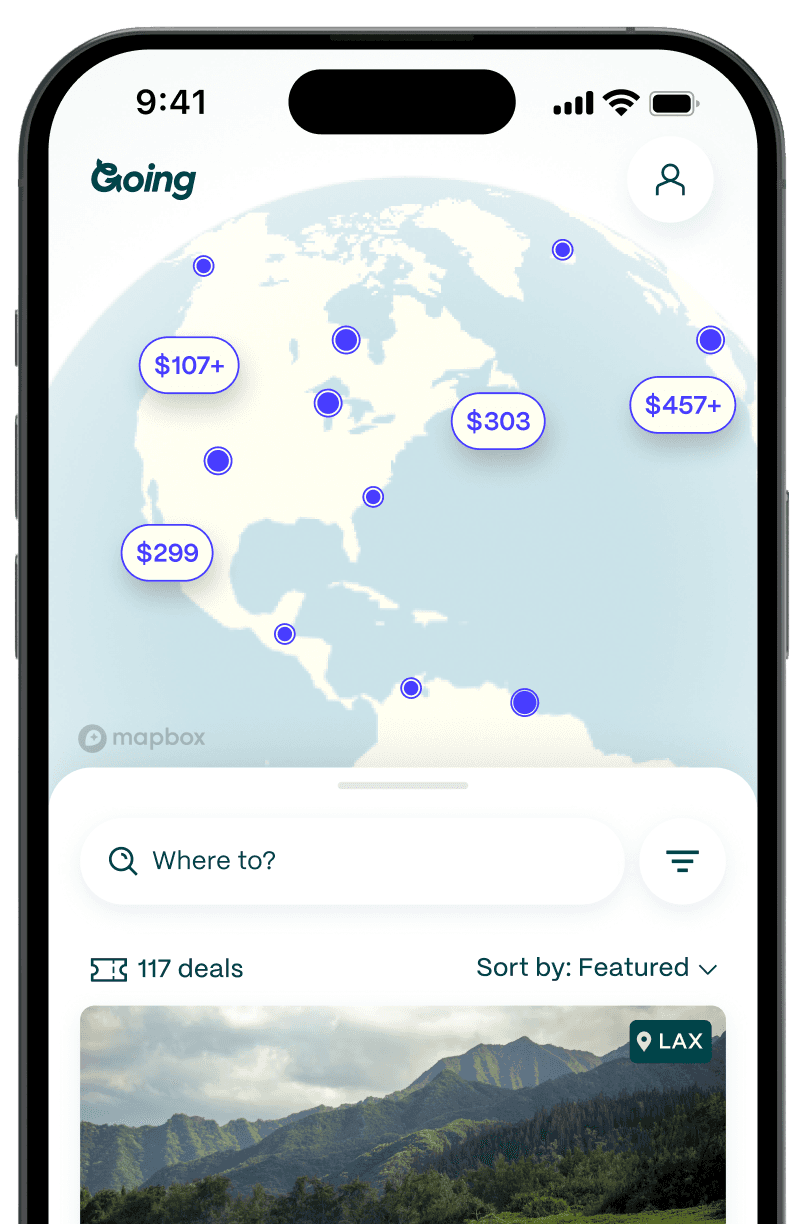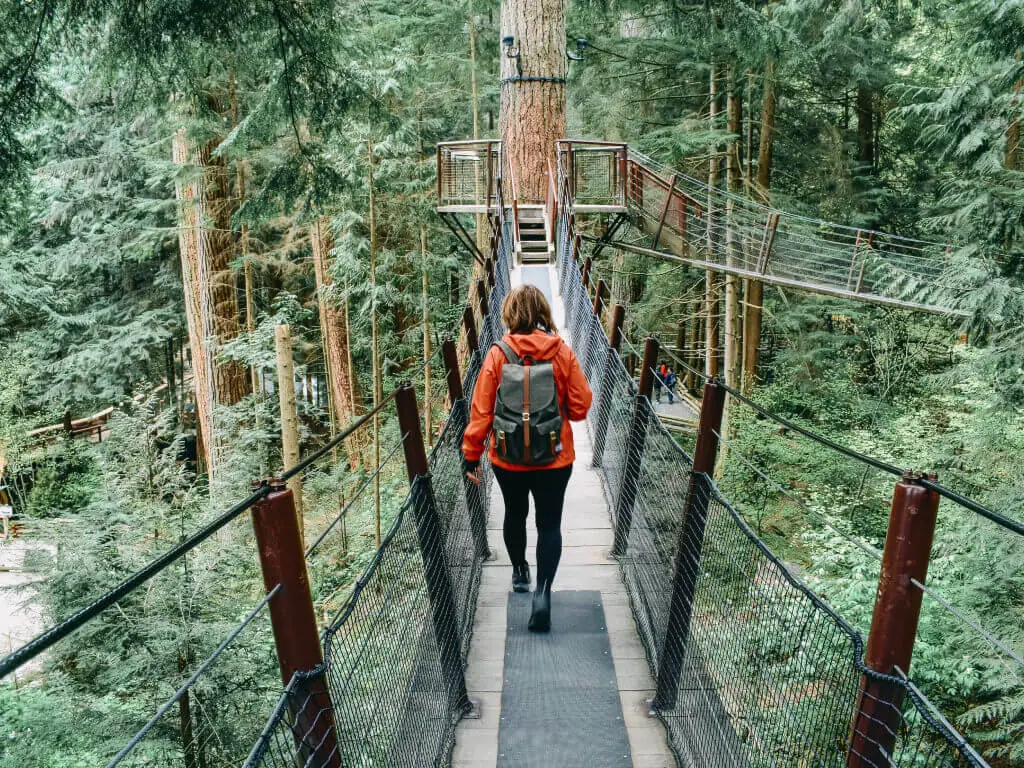
Vancouver: The Canadian City That's Home to a Massive Urban Rainforest
Set between the Pacific Ocean and the Coast Mountains, with a juxtaposition of steel-and-glass towers and old-growth trees reaching toward the sky, Western Canada’s largest city mixes urban and outdoor adventures. Without leaving downtown Vancouver, you can hike in the rainforest, explore the region’s varied cultures, and dine around the globe.
Adventures in the urban rainforest

With its downtown beaches, 250 city parks, and generally temperate climate, Vancouver is an outdoor-oriented metropolis. Join the crowds walking the seawall, the 17-mile waterfront pathway first constructed over 100 years ago that follows downtown and encircles the urban rainforest of Stanley Park. But don’t just stroll the perimeter of this 1,000-acre parkland that’s nearly 20% larger than New York’s Central Park; follow the trails into Stanley Park’s quiet interior beneath towering cedars and Douglas firs.
Explore hiking routes just outside the city center, too, in densely wooded Pacific Spirit Regional Park near the University of British Columbia (UBC) campus, or on Vancouver’s North Shore, where you can climb the stair-like Grouse Grind (the payoff for the 1.5-mile trek up “Mother Nature’s stairmaster” is expansive vistas over the mountains), hike the 8.7-mile path to scenic Norvan Falls that cascade between the evergreens in Lynn Headwaters Regional Park, and wander through oceanfront Lighthouse Park for views of the city across the sea.
How green are my gardens?

For more cultivated adventures, several Vancouver gardens showcase both native plants and the region’s diverse traditions. Learn what grows in British Columbia at the centrally located VanDusen Botanical Garden or at UBC Botanical Garden, where the Greenheart TreeWalk takes you high into the rainforest canopy.
In Chinatown, Dr. Sun Yat-Sen Classical Chinese Garden is a meticulous re-creation of a traditional Chinese garden, where the swooping-roofed pagodas, intricately carved gates, and stone pathways were constructed by a team of artisans from China. At UBC’s Nitobe Memorial Garden, the cherry blossoms, koi ponds, and arched bridges recall outdoor spaces in Japan.
Tales of the city
More than half of metro Vancouver’s 2.6 million residents identify as members of a visible minority and two museums highlight their stories. The multimedia Chinatown Storytelling Centre, opened in 2021, shares audio and video narratives of Chinatown residents, tracing the district’s heritage from the 1800s railroad era through the present day.
Across Burrard Inlet, MONOVA, as the Museum of North Vancouver (which also opened in 2021) is known, tells both Indigenous and settler stories. The museum illuminates the shipbuilding and logging industries that once dominated the region, as well as the Persian, Chinese, and other communities who’ve settled here.
Understanding the region’s Indigenous roots

The Musqueam, Squamish, and Tsleil-Waututh nations have lived in what is now Vancouver for thousands of years, among the more than 200 distinct First Nations who reside across British Columbia. Their legacy is not simply historic; metropolitan Vancouver today has the third-largest urban Indigenous population in Canada.
To learn more about these Indigenous cultures, start by touring Stanley Park with First Nations-owned Talasay Tours. As you walk the rainforest trails and learn how forest plants are used for food and medicine, your guide will share stories of early settlement and present-day Indigenous communities.
Back downtown, visit the Bill Reid Gallery, Canada’s only public gallery focused on contemporary Indigenous Northwest Coast Art. Or look for massive murals that Musqueam artist Debra Sparrow created for her Blanketing the City Series, where she incorporated patterns found in traditional Coast Salish weavings into paintings on pillars of the Granville Street Bridge in downtown’s Cathedral Square, and on an eight-story Main Street tower.
Sample dishes prepared from traditional ingredients including bison pot roast, wild salmon, and pemmican mousse (made from smoked, dried meat or fish) at Indigenous-owned Salmon n’ Bannock bistro, and sleep at Skwachàys Lodge, Canada’s first Indigenous arts hotel, where First Nations artists incorporated designs from Indigenous legends and crafts into the 18 boutique-style guest rooms.
Diverse food trails
While you’ll find diverse foods around the city, Vancouver’s suburbs have a particularly varied mix of cultures, offering some intriguing culinary experiences. For top-notch Chinese regional cuisine, ride the Skytrain to Richmond, where almost 65% of the population is of Asian heritage. Follow Richmond's 16-stop Dumpling Trail, graze through the Richmond Night Market on weekend evenings from spring through fall, or dine at restaurants serving dishes from Hong Kong, Taiwan, and across China, particularly on Alexandra Road. It has so many eateries—roughly 70 on just three blocks—that the thoroughfare is nicknamed Food Street.
East of Vancouver, the newly created Surrey Spice Trail, a collection of more than 75 restaurants and bakeries in the city of Surrey (about 20 miles from downtown Vancouver) is especially strong on South Asian cuisines, reflecting the area’s large South Asian community. In Coquitlam, 20 miles east of the city, try Korean-style seafood, fried chicken, barbecue, and much more.
Granville Island beyond the market

Located on Granville Island (actually a peninsula) across False Creek from downtown Vancouver, Granville Island Public Market is one of the city’s most delicious attractions. Visitors and locals visit food stalls selling salmon candy, locally made charcuterie, baskets of piled-high berries, and more. But be sure to take some time to explore beyond the busy market.
In this former industrial area, redeveloped over the past several decades into a mixed-used hub of arts and culture, check out the art studios where potters, weavers, and even broommakers practice their crafts, or see what’s on stage in one of the many performance spaces. Sip your way from The Liberty Distillery to Granville Island Brewing to the Artisan SakeMaker, where you can sample locally crafted rice wines. Get out on the ocean, too—rent a stand-up paddleboard or kayak to see the popular peninsula from the waters of False Creek.
Drinking in Yeast Van
Several neighborhoods on Vancouver’s east side have become craft beer hubs, giving these East Van districts with nearly two dozen breweries the moniker Yeast Van. Around Main Street, sample the brews at 33 Acres Brewing or Brassneck Brewery.
Farther east along Clark Drive, Powell Street, and the side streets near Commercial Drive, check out breweries like Parallel 49, which won several prizes in the 2022 BC Beer Awards, and Callister Brewing, which took home a Best of Show award in the 2022 Canada Beer Cup competition for its Wee Laird Wee Heavy Scottish Ale. Still thirsty? Get more tasting tips from The BC Ale Trail website.
From sea to sky

Winding between the ocean and the snow-topped peaks of the Coast Mountains, the roughly 75-mile Sea-to-Sky Highway (Highway 99) linking Vancouver to Whistler ranks among Canada’s most beautiful road trips, with vistas of the nearby Gulf Islands, the fjords of Howe Sound, and numerous mountains around every curve.
Along the way, stretch your legs with a short hike to Shannon Falls, the third-highest waterfall in British Columbia. Or take a challenging climb up one (or all) of the three summits of the Squamish Chief, one of the largest granite monoliths in North America, which towers above the roadway.
Encompassing the traditional territories of the Squamish and Lil’wat First Nations, the route is also a cultural journey. Stop at seven informational kiosks along the way to learn more about their traditions. Take a break in Squamish for coffee and donuts at Fox & Oak, or cap off your road trip at Cordelia’s Locket with charcuterie, small plates, and stellar mountain views.
Good to Know
Is Vancouver expensive?
Vancouver is one of Canada’s most expensive cities to live in as well as visit, although with the US currency strong compared to Canada’s loonie, your dollars go farther right now. You can expect to pay $140-180 for the average double-occupancy hotel room, with budget hotels costing around $100 per night; mid-summer and holiday rates can be significantly higher. There are numerous fine dining options in Vancouver, but if you’re on a budget you can still eat pretty well for around $30-35 per day.
Best time to visit Vancouver
Vancouver shines in the summer months, when temperatures are mild, and rain is uncommon. Visitors can expect reasonably good weather from May-October, though the high temperatures may not even reach 70F at either end of that range. While snow is relatively rare in the city, November through February are often rainy.
What languages are spoken in Vancouver?
Canada’s official languages are English and French, but English is widely spoken across British Columbia. After English, the languages you’re most likely to hear in Vancouver are Cantonese, Mandarin, Punjabi, and Tagalog.
Vancouver with kids
Vancouver is a fantastically family-friendly city. There are outdoor activities galore, most of which appear on the city’s list of top things to do whether you’re traveling with kids or not, as well as museums and attractions children are sure to love. Spend some time in the enormous Stanley Park, the colorful Granville Island Public Market, the Vancouver Aquarium, or Science World.
Vancouver public transportation
Public transportation in Vancouver makes getting around the city easy and efficient, whether you’re on land or on the water. The Canada Line subway runs directly between Vancouver International Airport and downtown, and two other subway lines serve the metro area’s eastern regions. A network of frequent buses can take you around different neighborhoods, and the SeaBus ferry connects downtown with the North Shore in only 12 minutes.
Is Vancouver safe?
Canada ranks 12th in the world and Vancouver is considered very safe.
Canada ranks 3rd in the world for LGBTQ+ protections, with a score of 90/100.
Getting to Vancouver
- Main airport: YVR
- Average Going deal price for flights to Vancouver: $271 roundtrip
More Canadian destinations
Join Going and get cheap flights to Vancouver and around the world delivered right to your inbox.
Last updated December 19, 2023
Articles you might like
View All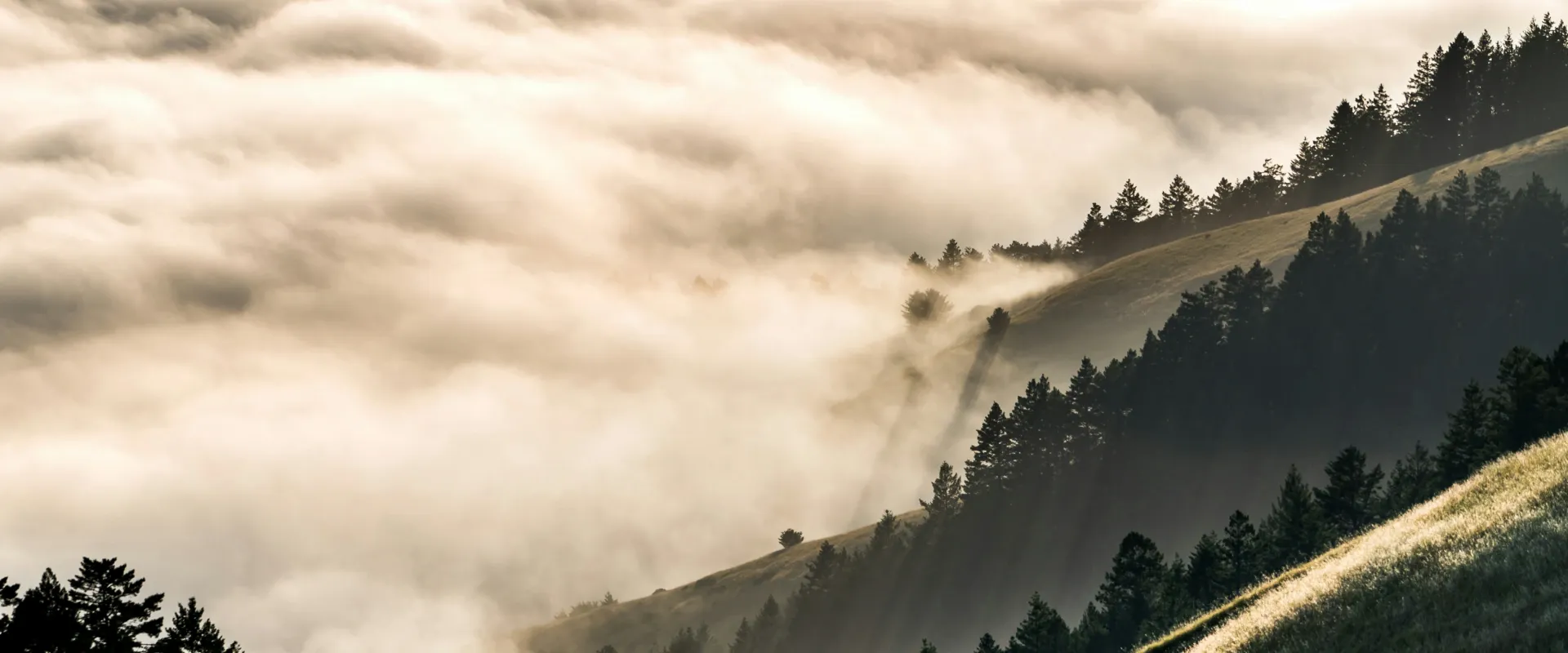
Best Day Trips from San Francisco: 25 Trips You’ll Actually Want to Take (2026)
Jan 6, 2026
12 min read
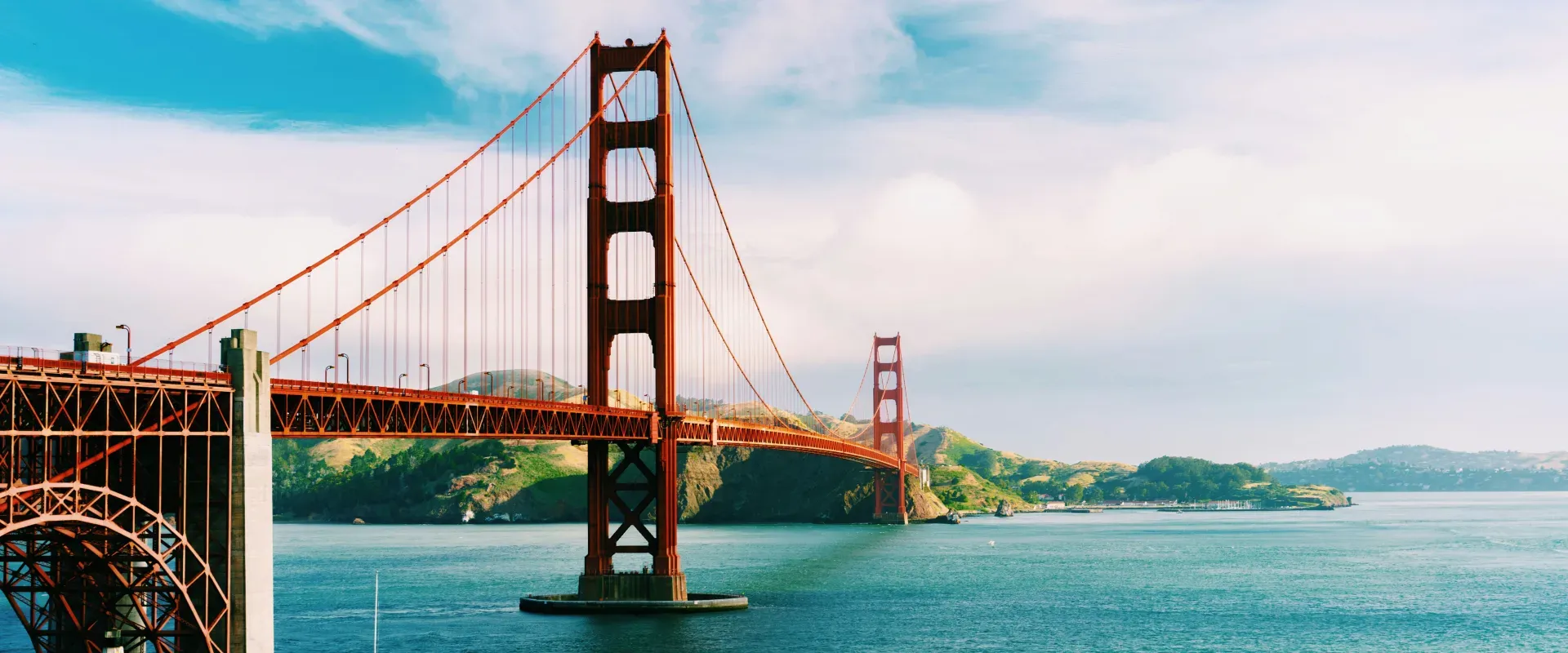
30 Free Things To Do In San Francisco That People Keep Recommending
Jan 6, 2026
10 min read

Marrakesh: The North African City Where Storytelling Is an Art
Jan 5, 2026
5 min read
